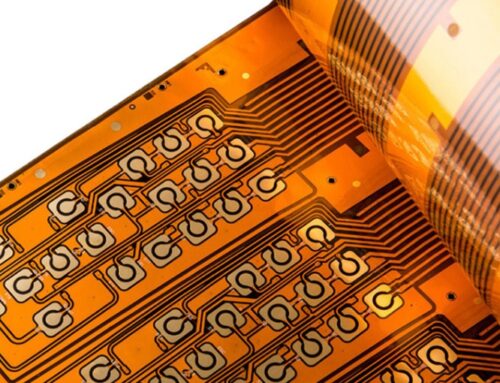Flexible PCB Fabrication: Cost Control and Quality Management

Introduction
In the dynamic world of electronics, flexible printed circuit boards have emerged as a preferred choice for numerous applications due to their versatility and reliability. However, their fabrication process involves meticulous attention to cost control and quality management to ensure optimal performance and economic feasibility. This article delves into the key aspects of flexible PCB fabrication, highlighting crucial points such as material selection, design considerations, and the challenges associated with ensuring high-quality production.
Key Characteristics and Cost Analysis of Flexible PCBs
Flexibility and Reliability of Flexible Circuits
Flexible PCBs are available in several types: single-sided, double-sided, multilayer, and rigid-flex boards.
1. Single-Sided Flexible PCB
This is the most cost-effective type, suitable for applications with low electrical performance requirements. It features a single layer of chemically etched conductive patterns on a flexible insulating substrate, typically made from materials like polyimide, polyethylene terephthalate, aramid fiber, and polyvinyl chloride.
2. Double-Sided Flexible PCB
These have conductive patterns etched on both sides of the insulating base film, connected through metalized holes to create a conductive path. This design supports flexibility and functional needs, with a cover film for protection and component placement.
3. Multilayer Flexible PCB
These consist of three or more layers of single or double-sided flexible circuits laminated together, connected by drilled and plated holes. This structure offers high reliability, better heat dissipation, and enhanced assembly performance. When designing multilayer circuits, one must consider the interplay between assembly dimensions, layer count, and flexibility.

4. Traditional Rigid-Flex PCB
This type combines rigid and flexible substrates selectively laminated together, creating a compact structure with metalized holes for electrical connections. It’s ideal for applications with components on both sides but can be more economical if all components are on one side, using a double-sided flexible PCB with an FR4 reinforcement layer.
5. Hybrid Structure Flexible PCB
A multilayer board with conductive layers made from different metals, such as a combination of FR-4 for inner layers and polyimide for outer layers, offers unique solutions for applications requiring stringent electrical performance and low-temperature environments.
Economic Considerations for FPCs
For simple circuit designs with small overall volume, traditional interconnection methods are generally more cost-effective. However, for complex circuits requiring the handling of multiple signals or special electrical/mechanical performance, flexible circuits provide a better design choice.
The main cost factor for flexible PCBs lies in the high cost of raw materials. Polyester flexible circuits cost 1.5 times more than rigid circuit materials, while high-performance polyimide flexible circuits can cost up to four times as much. Manufacturing challenges, such as handling flexible materials during automated processing and ensuring defect-free assembly, also contribute to the overall cost.
Ensuring Quality in FPC Fabrication
Cleanliness and Process Control
Maintaining a clean environment is crucial to avoid defects such as substrate dents or open circuits caused by debris. Ensuring clean conditions during the pressing process and removing contaminants promptly is essential.
Process Management
Dry Film Processing: Poor dry film operations can lead to fine line breakage and open circuits. Secure positioning during screen printing and adequate exposure are necessary to prevent ghosting and cracking.
Uniform Surface: Mixing new and old inks or leaving residual ink on screens can lead to inconsistent surface appearance. Consistent use of screen printing tools and proper ink handling are critical.
Enhancing Production Efficiency
Improving production efficiency and reducing costs can be achieved by introducing newer materials, refining production processes, and optimizing designs. For instance, using adhesive-less copper foil on substrates directly can achieve finer lines and improve flame retardancy, further reducing costs and accelerating UL certification processes.

Comprehensive Testing and Quality Assurance
Every FPC must undergo rigorous testing, including short circuit, impedance, solderability, thermal shock, and metallographic microsection analysis, to ensure it meets customer quality requirements. A robust quality control system, including regular training and performance evaluation of production staff, is vital to maintaining high standards.
Conclusion
The fabrication of flexible PCBs is a complex process that demands careful attention to cost control and quality management. Despite the higher costs compared to rigid PCBs, the advantages of flexible PCBs in terms of reliability, flexibility, and reduced overall assembly costs make them a valuable choice in modern electronics. As the industry continues to evolve, innovations in materials and processes will further enhance the economic feasibility and performance of flexible PCBs. The Gekun brand remains at the forefront, providing top-tier flexible PCB solutions through meticulous quality control and continuous innovation.








Leave A Comment